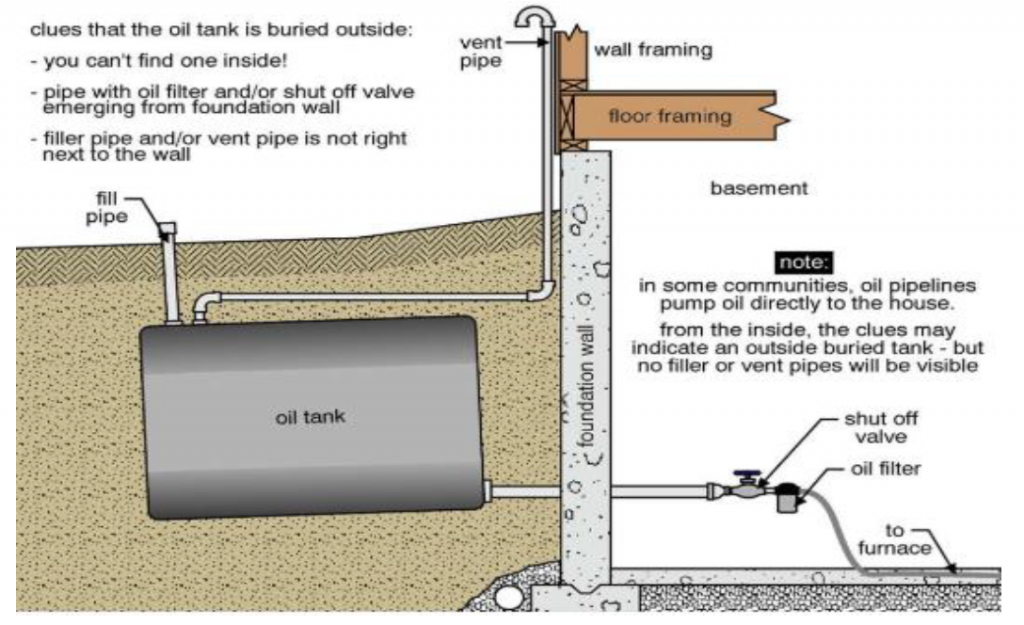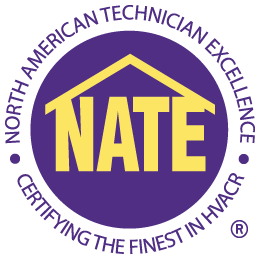What About Fuel Oil Tanks?
Where’s my tank?
Above ground, below ground, basement, crawl space, vertical or horizontal tank installation?
 Pictured to the left are two above-ground fuel tank options, your home style and/or construction can play a huge role in where your tank is located and what type of an oil tank you may have. Above ground, tanks are much easier to locate and to inspect/maintain.
Pictured to the left are two above-ground fuel tank options, your home style and/or construction can play a huge role in where your tank is located and what type of an oil tank you may have. Above ground, tanks are much easier to locate and to inspect/maintain.
Tank maintenance is important for tank longevity to help prevent leaks and to provide worry-free service. Remove any rust and keep the tank painted to help prevent exterior corrosion. Another important fact is that a full tank will help prevent moisture from forming on the inside. You should keep your tank full as possible, even through the summer. When the tank is less than full, the area that doesn’t have fuel can sweat on the inside, and water/condensation will accumulate. This will eventually cause corrosion and fuel quality degradation.
Fuel additives can be purchased from your fuel supplier, or the best source is from your trusted Service Provider such as Comfort Plus Services; Your Trusted Source for HVAC. Additives, along with proper preventative maintenance will prolong your tanks life and provide a cleaner fuel system for your oil-fired comfort system. Some of these additives also help remove any algae growth that may have formed because of the moisture and sweating inside of your oil tank.

What are these pipes, etc. on or near my tank?
Tank vent, whistle vent, tank gauge, single line feed, double line feed, top feed, bottom feed, oil filter, tiger loop system, and many other options could be present.
Every tank will have a way to vent the pressure that can build up when the fuel is delivered or when the temperature causes the fuel to expand. Some tanks (especially tanks in a basement) will have a whistle that blows when the tank gets full. The reason that whistle is important is to alert the delivery driver that the tank is full to help prevent the tank from being overfilled.
 Pictured to the right is an oil tank gauge that can be helpful so you can monitor the fuel level.
Pictured to the right is an oil tank gauge that can be helpful so you can monitor the fuel level.
 As pictured to the left, a fuel filter located at your tank or at your oil-fired burner is very important to help keep the burner clean between regular maintenance.
As pictured to the left, a fuel filter located at your tank or at your oil-fired burner is very important to help keep the burner clean between regular maintenance.
Some oil-fired systems work better when having a two-pipe oil feed system rather than just a single line that delivers oil to the burner as it helps prevent the pump from losing its “prime.” The location of the tank can play a role in rather the lines come from the top of the tank and the oil is on suction from the burner pump or the oil feed line comes from the bottom of the tank and is fed to the burner through gravity. For the bottom feed system, the elevation of the bottom of the oil tank must be above the oil burner on your oil-fired comfort system.
A good upgrade to a single fuel line delivery system is a component known as a “Tiger-Loop.” The tiger loop can be helpful to maintain a constant oil supply (prime) and help remove air that can accumulate in the oil lines.
Comfort Plus Services provides a complete inspection and explanation of your homes comfort system, and our Technicians can help you understand what you need to know to keep your family cozy warm and comfortable all winter.







